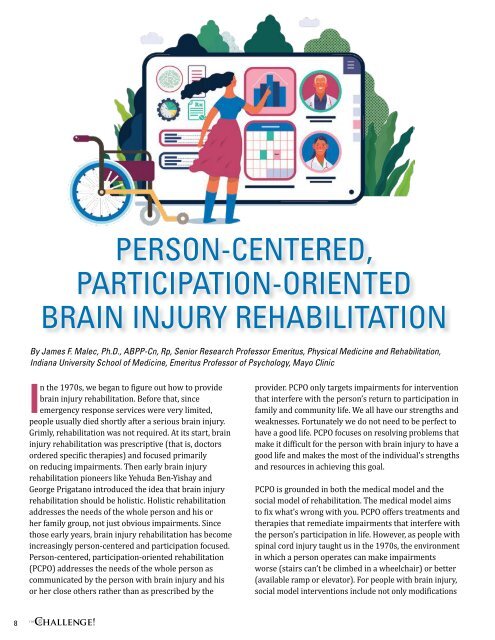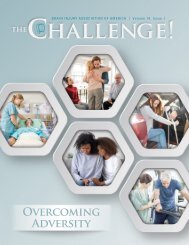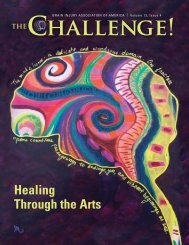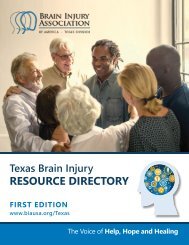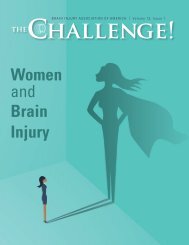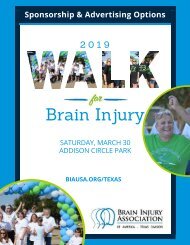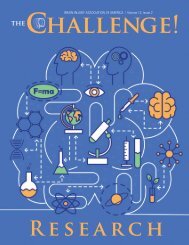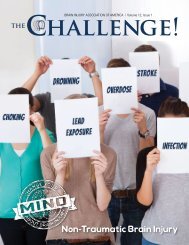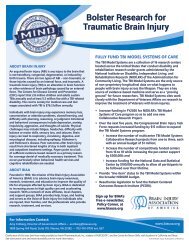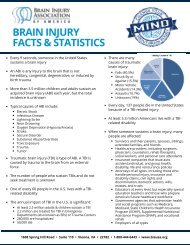THE Challenge 2019 Vol. 13 Iss. 3 Finding Cures for Brain Injury
Finding Cures for Brain Injury
Finding Cures for Brain Injury
You also want an ePaper? Increase the reach of your titles
YUMPU automatically turns print PDFs into web optimized ePapers that Google loves.
PERSON-CENTERED,<br />
PARTICIPATION-ORIENTED<br />
BRAIN INJURY REHABILITATION<br />
By James F. Malec, Ph.D., ABPP-Cn, Rp, Senior Research Professor Emeritus, Physical Medicine and Rehabilitation,<br />
Indiana University School of Medicine, Emeritus Professor of Psychology, Mayo Clinic<br />
In the 1970s, we began to figure out how to provide<br />
brain injury rehabilitation. Be<strong>for</strong>e that, since<br />
emergency response services were very limited,<br />
people usually died shortly after a serious brain injury.<br />
Grimly, rehabilitation was not required. At its start, brain<br />
injury rehabilitation was prescriptive (that is, doctors<br />
ordered specific therapies) and focused primarily<br />
on reducing impairments. Then early brain injury<br />
rehabilitation pioneers like Yehuda Ben-Yishay and<br />
George Prigatano introduced the idea that brain injury<br />
rehabilitation should be holistic. Holistic rehabilitation<br />
addresses the needs of the whole person and his or<br />
her family group, not just obvious impairments. Since<br />
those early years, brain injury rehabilitation has become<br />
increasingly person-centered and participation focused.<br />
Person-centered, participation-oriented rehabilitation<br />
(PCPO) addresses the needs of the whole person as<br />
communicated by the person with brain injury and his<br />
or her close others rather than as prescribed by the<br />
provider. PCPO only targets impairments <strong>for</strong> intervention<br />
that interfere with the person’s return to participation in<br />
family and community life. We all have our strengths and<br />
weaknesses. Fortunately we do not need to be perfect to<br />
have a good life. PCPO focuses on resolving problems that<br />
make it difficult <strong>for</strong> the person with brain injury to have a<br />
good life and makes the most of the individual's strengths<br />
and resources in achieving this goal.<br />
PCPO is grounded in both the medical model and the<br />
social model of rehabilitation. The medical model aims<br />
to fix what’s wrong with you. PCPO offers treatments and<br />
therapies that remediate impairments that interfere with<br />
the person’s participation in life. However, as people with<br />
spinal cord injury taught us in the 1970s, the environment<br />
in which a person operates can make impairments<br />
worse (stairs can’t be climbed in a wheelchair) or better<br />
(available ramp or elevator). For people with brain injury,<br />
social model interventions include not only modifications<br />
8


